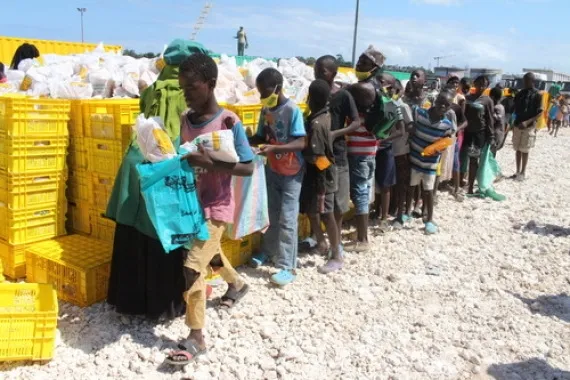Did Over 295 Million People Across 53 Countries Face Acute Hunger in 2024?

Synopsis
Key Takeaways
- 295 million people face acute hunger in 2024.
- Child malnutrition levels are critically high, with 38 million children affected.
- The prevalence of food insecurity is at 22.6% of the population.
- Humanitarian funding is declining rapidly.
- Forced displacement contributes significantly to hunger.
Geneva, May 16 (NationPress) Acute food insecurity and child malnutrition have surged for the sixth consecutive year in 2024, pushing over 295 million individuals in 53 countries to the edge, as reported by UN agencies on Friday.
This marks an increase of 13.7 million compared to 2023, attributing the significant rise in food insecurity and malnutrition to factors such as conflict, economic shocks, climate extremes, and forced displacement.
The report revealed that the rate of acute food insecurity is worsening, now affecting 22.6 percent of the global population. For the fifth year in a row, this figure has remained above 20 percent.
During the same timeframe, those experiencing catastrophic hunger more than doubled, reaching 1.9 million, the highest number since tracking began in 2016, with expectations that these hunger shocks will persist into 2025.
“This Global Report on Food Crises is another stark indictment of a world dangerously off course,” stated United Nations Secretary-General António Guterres.
He further emphasized, “Long-standing crises are now being compounded by a dramatic reduction in lifesaving humanitarian funding. This is not just a system failure; it’s a failure of humanity. Hunger in the 21st century is indefensible. We cannot respond to empty stomachs with empty hands and turned backs.”
Moreover, the report highlighted “extremely high levels” of malnutrition, especially among children in regions like the Gaza Strip, Mali, Sudan, and Yemen. Almost 38 million children under five are acutely malnourished across 26 nutrition crises.
The report also notes a significant increase in hunger due to forced displacement, with nearly 95 million forcibly displaced individuals, including internally displaced persons (IDPs), asylum seekers, and refugees, residing in food crisis nations such as the Democratic Republic of Congo, Colombia, Sudan, and Syria out of a global total of 128 million displaced people.
Despite the record levels of acute food insecurity and malnutrition, global funding is declining at an alarming rate, and political momentum is diminishing.
The report calls for a bold reset that prioritizes evidence-driven and impact-focused action to break the cycle of escalating hunger and malnutrition.









